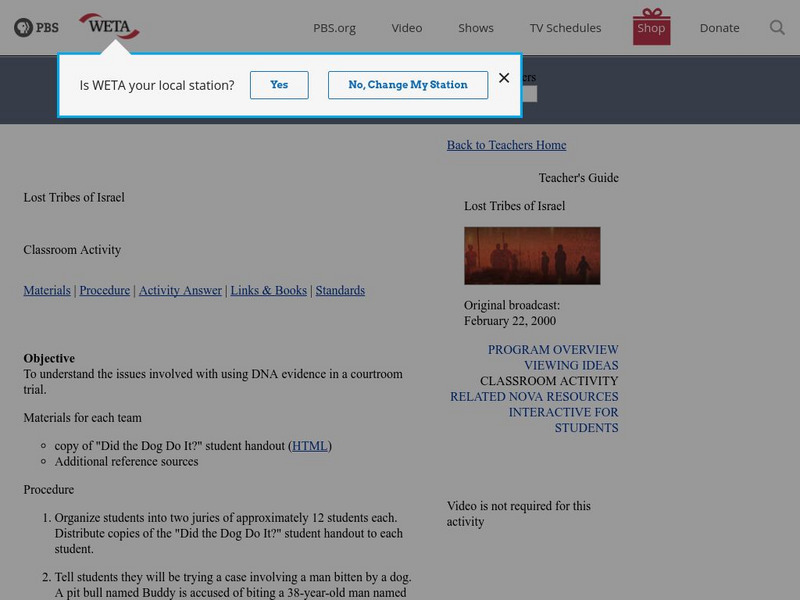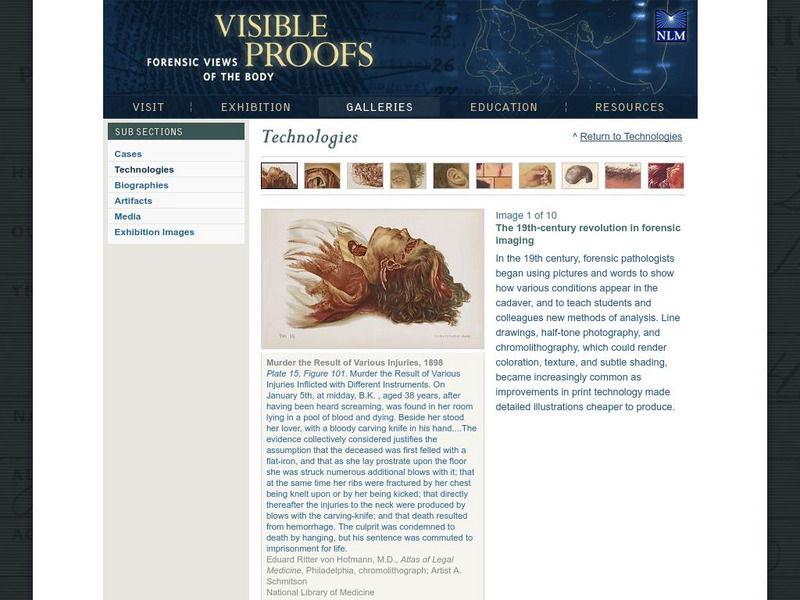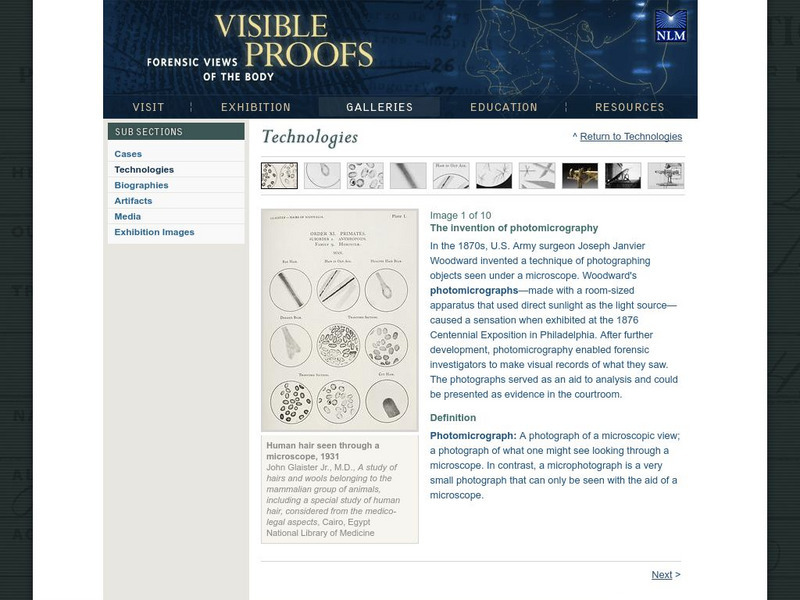PBS
Pbs Teachers: Lost Tribes of Israel, Dna
Investigate how fingerprinting works, determine what sorts of evidence and questions are important in deciding a court case and understand the issues involved with using DNA evidence in a courtroom trial.
Other
Dave's Guide to Speech Writing: An Overview of the National Forensics League
Sight contains an overview of NFL, including an explanation of categories, points, and degrees.
National Institutes of Health
National Library of Medicine: Reading Gunshot Patterns
Various pictures of parts of the human anatomy showing gun shot trauma are found on this interesting site. .
National Institutes of Health
National Library of Medicine: The Bertillon System
Bertillon devised a system to make order out of the myriad of crime scene photos taken by the police. This brief site describes how that system worked and shows a number of crime scene photos taken from Bertillon's photo album.
National Institutes of Health
National Library of Medicine: Key Accomplishments, Dna
A brief history of the major discoveries related to DNA from 1865 until 1991. Pictures of the responsible reponsibile for these key accomplishments are included as well.
National Institutes of Health
National Library of Medicine: The 19th Century Revolution in Forensic Imaging
In the 19th century, forensic pathologists began to use words and pictures to describe cadavers and to teach using cadavers in the classroom. See a number of interesting photos of various crime scenes on this interesting site.
National Institutes of Health
National Library of Medicine: The Invention of Photomicrography
The technique of photographing objects observed under a microscope is discussed in this succinct site. Various pictures taken under a microscope are displayed on this site as well.
National Institutes of Health
National Library of Medicine: Entomology in Action
Two lesson plans are found in this site. Lesson Plan 1 is geared to grades 6-9. In this plan, student's will be able to list the different stages of the blow fly's life cycle and understand how the life cycle and ADH (accumulated degree...
National Institutes of Health
National Library of Medicine: Dna a Molecular Identity
In this lesson plan site, students learn about DNA and examine three different situations where DNA was used to solve a case.
PBS
Pbs Teachers: Umbrella Assassin: Biochemical Weaponry
Research the first case of ricin poisoning in 1978, from a scientific and political perspective. Identify and rate potential sources of biochemical warfare available today.
PBS
Pbs: Nature: Crime Scene Creatures
Become a detective with this interactive crime scene! Use tools and animals at the crime scene to help you determine the time of death of the body. By collecting specimens at the scene, students try to determine how long the person has...
Other
Crime Scene Investigator: Developing and Lifting Footwear Impressions
A thorough explanation of how to make a footwear impression at a crime scene. Topics include equipment needed, the technique used, documentation, personal safety, and more.
Other
Crime Scene Investigation: Protecting the Crime Scene
This brief but informative site examines how a crime scene should be protected with emphasis on the role of the first officer(s) to arrive. Points are made about the arrival of additional personnel, eating and drinking at the crime...
Other
Crime Scene Investigation: Proper Tagging and Labeling of Evidence
What is the purpose of tagging and labeling items of evidence? What information belongs on the tag? These questions are answered in this concise but competent site.
Other
Crime Scene Investigator: Practical Methods for Processing a Vehicle
Practical methods are suggested to secure and not contaminate any evidence found in a vehicle at a crime scene.













